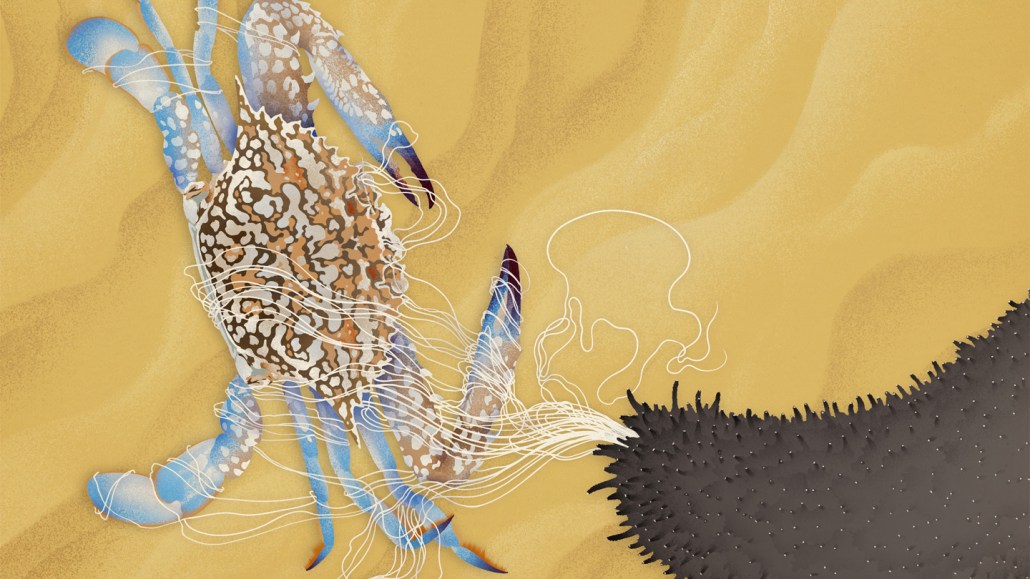
When startled, a black sea cucumber (Holothuria leucospilota) expels a stringlike substance, called the Cuvierian organ, as a defense against predators like crabs, as shown in this artist’s illustration.
Liang Li

When startled, a black sea cucumber (Holothuria leucospilota) expels a stringlike substance, called the Cuvierian organ, as a defense against predators like crabs, as shown in this artist’s illustration.
Liang Li